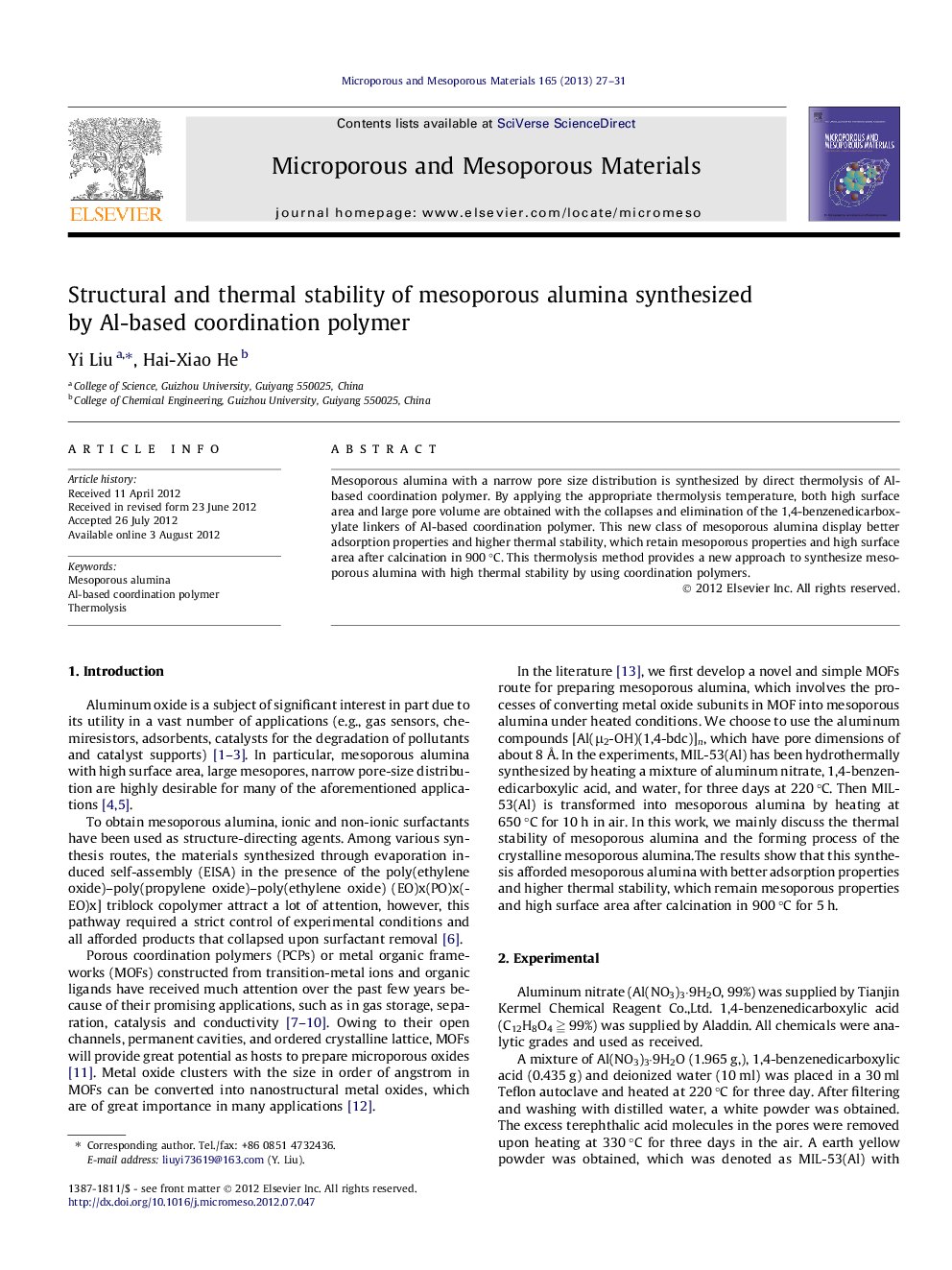| Article ID | Journal | Published Year | Pages | File Type |
|---|---|---|---|---|
| 73907 | Microporous and Mesoporous Materials | 2013 | 5 Pages |
Mesoporous alumina with a narrow pore size distribution is synthesized by direct thermolysis of Al-based coordination polymer. By applying the appropriate thermolysis temperature, both high surface area and large pore volume are obtained with the collapses and elimination of the 1,4-benzenedicarboxylate linkers of Al-based coordination polymer. This new class of mesoporous alumina display better adsorption properties and higher thermal stability, which retain mesoporous properties and high surface area after calcination in 900 °C. This thermolysis method provides a new approach to synthesize mesoporous alumina with high thermal stability by using coordination polymers.
Graphical abstractThe nanostructured mesoporous alumina was synthesized via a thermal process by using MIL-53(Al). The structure of MIL-53(Al) consists of a three-dimensional framework built up from the interconnection of infinite chains of corner-sharing octahedral AlO4(OH)2 with 1,4-benzenedicarboxylate ligands. After heating above 530 °C, the benzenedicarboxylate (BDC) linker gradually collapses from framework and MIL-53(Al) is transformed into amorphous Al2O3 at 650 °C for 10 h. During the process of elimination of BDC linker, the octahedral AlO4(OH)2 maintain the layer alignment of their parent MIL-53(Al) and amorphous alumina channels with highly arrangements can be obtained.Figure optionsDownload full-size imageDownload as PowerPoint slideHighlights► Crystalline mesoporous alumina is synthesized by direct thermolysis of Al-based coordination polymer. ► Obtained mesoporous alumina display better adsorption properties and higher thermal stability. ► This thermolysis method provides a new approach to synthesize crystalline mesoporous alumina.
